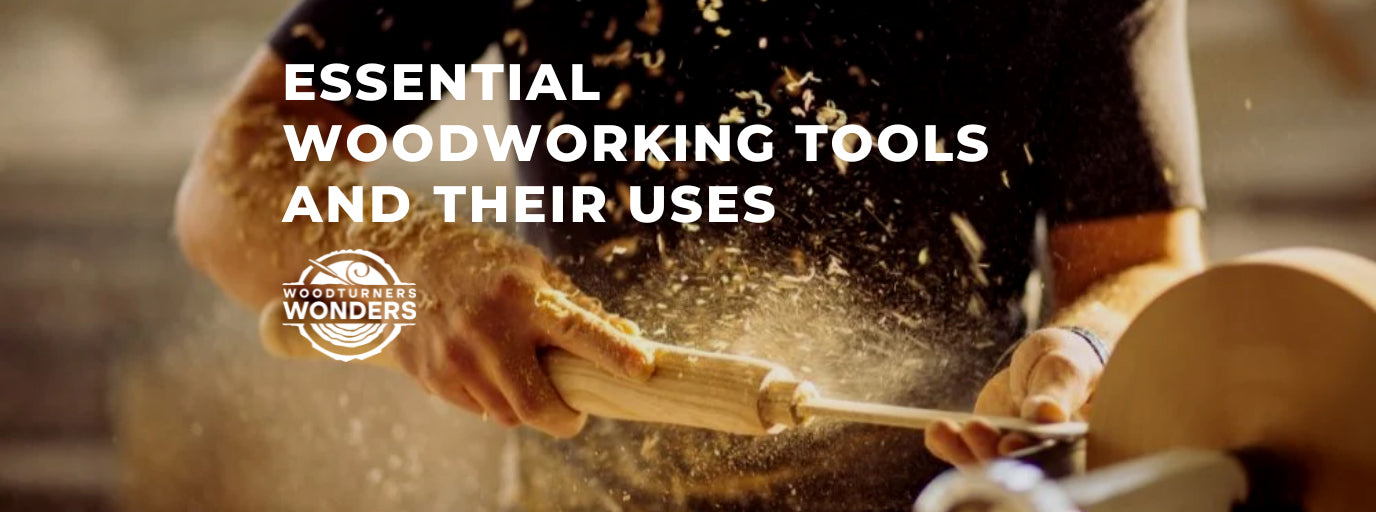
Essential Woodturning Tools And Their Uses
Woodturning requires several tools for the best results. They range from general stock removal to more precise cutting. Some equipment is for maintaining safety and ensuring your tools keep their edge to make the necessary cuts. Each tool will affect the time it takes to create a piece. There may be different choices for correct tools to use, but some are better than others.
In the worst-case scenario, careless use of a tool can put you in danger and risk destroying your current equipment. Whether you’re just starting and experimenting with woodturning or you’re a veteran who wants a refresher, consider the essential woodturning tools and their uses.
Woodturning Lathe
The woodturning lathe machine is the most fundamental piece of equipment in any woodturner’s arsenal. It allows for the rotation of the wood piece. As the lathe rotates the wood, the woodturner cuts away at it. This process shapes it into the desired form. The machine rotates the wooden pieces at speeds that can reach upwards to speeds considered unsafe. Therefore, the turner must understand the fundamentals of mounting wood on the lathe and using the proper speed(s) to stay safe.
Safety Concerns
Because the lathe spins the wood so quickly, it creates a few safety concerns turners need to contend with. For one, never wear loose clothing or hanging jewelry around the lathe. Those items can easily become caught on the rotating lathe as it spins, causing serious bodily harm. Always start at a slower speed and increase the RPM to ensure the piece is secure and doesn’t excessively vibrate.
Also, make sure you securely attach all pieces of wood before beginning the spinning process. Loose wood that spins too fast can come loose and shoot out from the machine, injuring you or others nearby. Regardless of the wood blank’s shape, an excessive rotational speed can cause the lathe to shake violently and dislodge the wood at times if it is in an unbalanced position on the lathe. This will cause bodily harm to the operator.
Respirator
When you get into the fine detail work of a wooden piece, it creates fine wood dust in the air and kicks up other small particles. In the long run, inhaling these particles will cause lasting damage to the lungs, resulting in chronic respiratory issues. The effects of the particles are not immediate. It will take time for the damage to build up, but it will eventually result in ongoing health problems.
Because of the danger of fine wood dust, respirators are necessary parts of any woodturner’s arsenal. They don’t aid in shaping the wood. But they do protect the user from suffering the lasting effects of inhaling wood particles.
Spindle Roughing Gouge
A spindle roughing gouge is one of the initial tools woodturners use in a long grain orientation to make a spindle round. Ideally, you shouldn’t use a spindle roughing gouge on the end grain, as a serious “catch” could result. This could then break the tool at the “tang” and possibly injuring the turner. The tang is relatively thin and can snap off with enough pressure. This will send the object flying, posing a significant threat to anyone in the area. Always use the spindle roughing gouge on the side grain.
Spindle Gouge
The spindle gouge is a more detail-oriented tool. It comes in after the roughing spindle gouge in most cases. The small, shallow flute allows for precise carving, facilitating detail work that’s not possible with larger flutes or bowl gouges. It’s a versatile instrument that’s critical for creating professional-looking wood pieces. Spindle gouges are not strong enough for heavier operations like hollowing out a bowl or large stock removal. Therefore, you should not use them for that purpose.
Skew Chisel
This tool is difficult to use, but the quality of the finish it provides is worth the time it takes to learn how to utilize it properly. The skew chisel is best for planing wood with a long grain orientation, and it leaves a glossy finish and a smooth surface in its wake. You most likely won’t be able to use it to its full potential from the beginning. But don’t let the difficulty discourage you, as you’ll be able to make higher-quality pieces in the end.
Bowl Gouge
Often, woodturners create bowls out of their pieces. But to get the smooth, even surface inside and outside the bowl, turners use the bowl gouge. These come in different profiles: a U-shaped flute (sometimes referred to as parabolic) and a V-shaped one, each providing its own utility. The type used is usually a matter of preference for the experienced turner.
Scrapers
Scrapers come in all sizes and shapes, and woodturners use them for various reasons. They can be big and heavy with a “negative rake” profile. This design allows them to clean tool marks out of the bowl for the final cut. Alternatively, they can be screwdrivers reground for a specific need. It’s important for the turner to understand the dynamics of shaper profiles and when they will come in handy to accomplish the task at hand.
CBN Grinding Wheels
Because your tools cut away at wood, the wood eventually cuts away at them. The tool edge will eventually wear down rather quickly. As a result, it will cut through wood less efficiently, which will affect the quality of your work and could pose some safety concerns. This occurrence is normal, though, as tools don’t last forever. They will need resharpening on their edges on a frequent basis. This is where cubic boron nitride (CBN) grinding wheels come in.
CBN wheels sharpen tools more efficiently than stone-type wheels. They run cooler, last longer, and don’t change diameters like stone-type wheels. This makes them far superior compared to other types of abrasives on the market. Most turning operations require you to resharpen a turning tool every 15 to 20 minutes, depending on the type of steel you use and the wood you cut.
Make Sure You Have Everything You Need
Woodturners rely on several critical instruments to get the job done as quickly and efficiently as possible. These pieces of equipment allow them to create intricate and quality wood items. Know the essential woodturning tools and their uses to get the most out of your turning experience. Neglecting safety can pose a serious risk to your health, and going about your work with less-than-ideal tools can slow your progress down.


Leave a comment